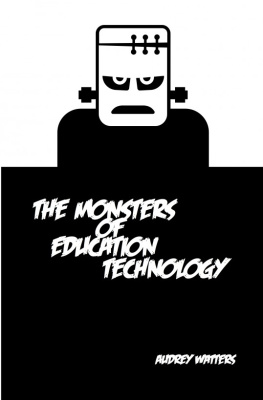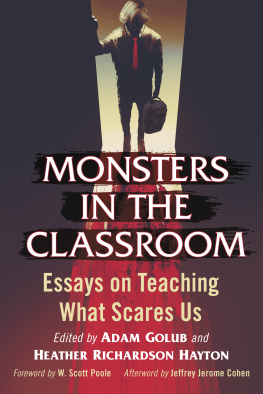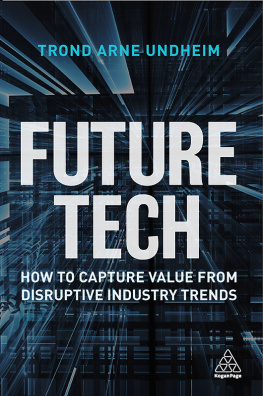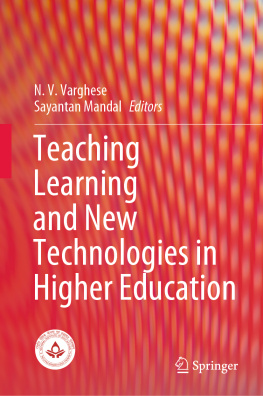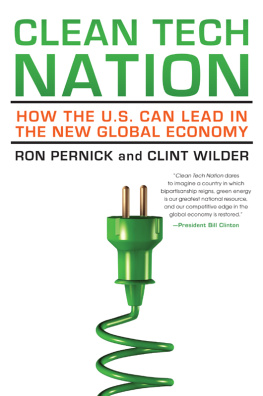The Monsters of EducationTechnology
AUDREY WATTERS
Copyright 2014 AudreyWatters
The Monsters ofEducation Technology is licensed under a Creative CommonsAttribution-ShareAlike 4.0 License.
For Seymour
CONTENTS
Introduction
I was supposed to write a different book thisyear.
I do have several chapters of TeachingMachines written, I promise, and if youre one of the peoplewhos told me how excited you are to read it, Im sorry that itstaking me so long (but thank you for the continuedencouragement).
Ive done an incredible amount of research on thebook a cultural history of teaching machines. Ive fallen downa rabbit hole of patent history, for example, spending hours andhours looking at plans for the various devices that have claimed toautomate teaching and learning. As a constant reminder to theproject, my workspace is littered with books about the history ofeducation technology, the work of B. F. Skinner and Sidney Presseyand Alan Kay and Seymour Papert and others. I bookmark any blogpost about the latest developments in robot essay graders or thelatest (re)discovery involving intelligent tutoring systems. Papers(yes, papers) and scribbled notes (yes, scribbled notes) pile uparound me as I sit at my kitchen table... and work on otherthings.
Being a freelance writer is challenging in the bestof times (and no, hyping a freelance economy does not make thisthe best of times); and in the last year or so, Ive beensupplementing that Please Donate button on the Hack Educationwebsite with a little public speaking.
With a lot of public speaking.
Over the course of 2014, I have delivered over 14unique talks and keynotes (a number that doesnt include panels orworkshops or webinars). Do please note that adjective there.Unique.
Many on the ed-tech speaking circuit have told methat Im doing it wrong. Youre supposed to prepare one talk onetalk that is well honed and, of course, can be extended and/orlocalized. You tell the audience at every stop along the way thatone thing; you repeat that one message that ostensibly you werehired to deliver. (Bonus points if the presentation is alreadyavailable via a TED Talk, and they still asked you to perform inperson.)
Instead, I wrote a bunch of new stuff and tried towork through various ideas. I did so because I am both furious andcurious about education technologys past, present, and future.Certainly there was some overlap in these talks. In some cases, Irepeated words and references and phrases and (gasp!) paragraphs. Alot of the ideas and arguments are, not surprisingly,connected.
I didnt give one talk again and again and again.And in not doing so, it appears that I actually produced a book,one that I wrote and read aloud in hour-long chunks to audiencesacross the US, Canada, and the UK. I spent 2014 on a book tour fora book I hadnt yet written.
Each chapter here was written to be deliveredorally. As such, some of these veer towards sermons andexhortations; they were written to stand on their own. I have madea few edits, tightened some language, cut some banter, and added apoorly formatted bibliography. The original versions areavailable on Hack Education, where you can also find links toslides, video, and audio.
The first section of the book explores the hiddenhistory of education technology. Hidden or lost or purposefullyignored. In these talks, I tried to unearth and retell the storiesof early education technologists, always asking why it is thated-tech today operates with such a vigorous denial of its past.
The second section examines the ideology(ideologies) of ed-tech. Much like its history, this is somethingwe all too often fail to grapple with, even though I hope wedagree that neither education nor technology are everideology-free.
The final section alludes to the talk from which thetitle of this book is drawn: Ed-Tech's Monsters. I delivered akeynote by that name at the Association for Learning Technologyconference in September. It is in this final section of the bookthat I try to be optimistic.
Or at least I try to point out what an importantmoment we find ourselves: a moment where education technology ispoised to either become more monstrous or more marvelous.
I am hopeful that in 2015, I'll be able to finishTeaching Machines. In the meantime, thank you for readingand supporting my work throughout 2014.
I. The Hidden History ofEd-Tech
1 The History of the Future ofEd-Tech
A couple of months ago, my brother Fred and I wentback to the house we grew up in. Were getting to the age where wehave parents that are that age. Our dad had fallen, broken hiship, and was in a nursing home. We went to his house to check onthings.
Its been over 20 years since either of us livedthere. My bedroom has since become the guest bedroom. With theexception of the old bookshelf and bed, theres nothing therethats me. But my brothers room has become a shrine to the Fredthat was. It remains almost entirely untouched since he graduatedfrom high school and moved out to attend the Air Force Academy.Its pretty weird to visit the room now. Fred didnt stay in theAir Force Academy. He dropped out after his sophomore year, becamean environmental activist and then an emergency room nurse; hesnow a nurse practitioner in Maine.
Visiting his old bedroom was like stepping into thepast that felt strangely disconnected from the present. Not totallydisconnected; strangely disconnected. You could find glimpses thereof the kid he was, of the person he was supposed to become of myparents and grandparents visions of and plans for his future.
A future predicted in the 1970s and 1980s.
Its not the future that came to be. The roomcontained the history of that not-future.
We found on his bookshelf another example of this:The Kids' Whole Future Catalog. Published in 1982, Iremember how Fred and I would pour over this book. My brotheradmitted that it had shaped his thoughts at the time on who hewould become, his expectations of what his future would looklike.
Its a future of food factories and space vacationsand flying trains. Its a future where robots are teachers.
Again, like my little brothers room, its mostlythe future that wasnt. Or the future that isnt quite. Or thefuture that isnt quite yet.
I want to talk about the history of the future ofeducation technology this morning. The future that wasnt. Thefuture that isnt quite. The future that isnt quite yet. Thehistory of all of this.
I want us to consider where education technology hascome from, where we have been. As educators. As technologists.Where are we going? What narratives help us answer questions aboutthe past? What narratives help us shape the future?
As we move forward into a world that it increasinglygoverned by machines and algorithms, I think we must consider thetrajectory of the path were on. Because the future of ed-tech isshaped by the history of ed-tech whether we realize it ornot.
Last year, the programmer and designer Bret Victordelivered what I thought was one of the smartest keynotes Ive everseen.
He came on stage dressed in a button-up shirt andtie with pocket protector and proceeded to utilize an overheadprojector and transparencies for his talk. There are three visualcues there about the conceit of his talk: the pocket protector, theoverhead projector, and transparencies.
Victor spoke about the future of programming, but asthose visual cues and those presentation technologies implied, hespoke of the future as though he was describing it in 1973. Givenwhat we know now, he asked, what might programming be like 40years from now? In other words, given what we knew about computingin 1973, what would it be like in 2013?
Victor proceeded to talk about some of the computerscience research that had been conducted in the previous decade that is, in the 1960s. This was the research that he used to informhis predictions about the future:
Next page
